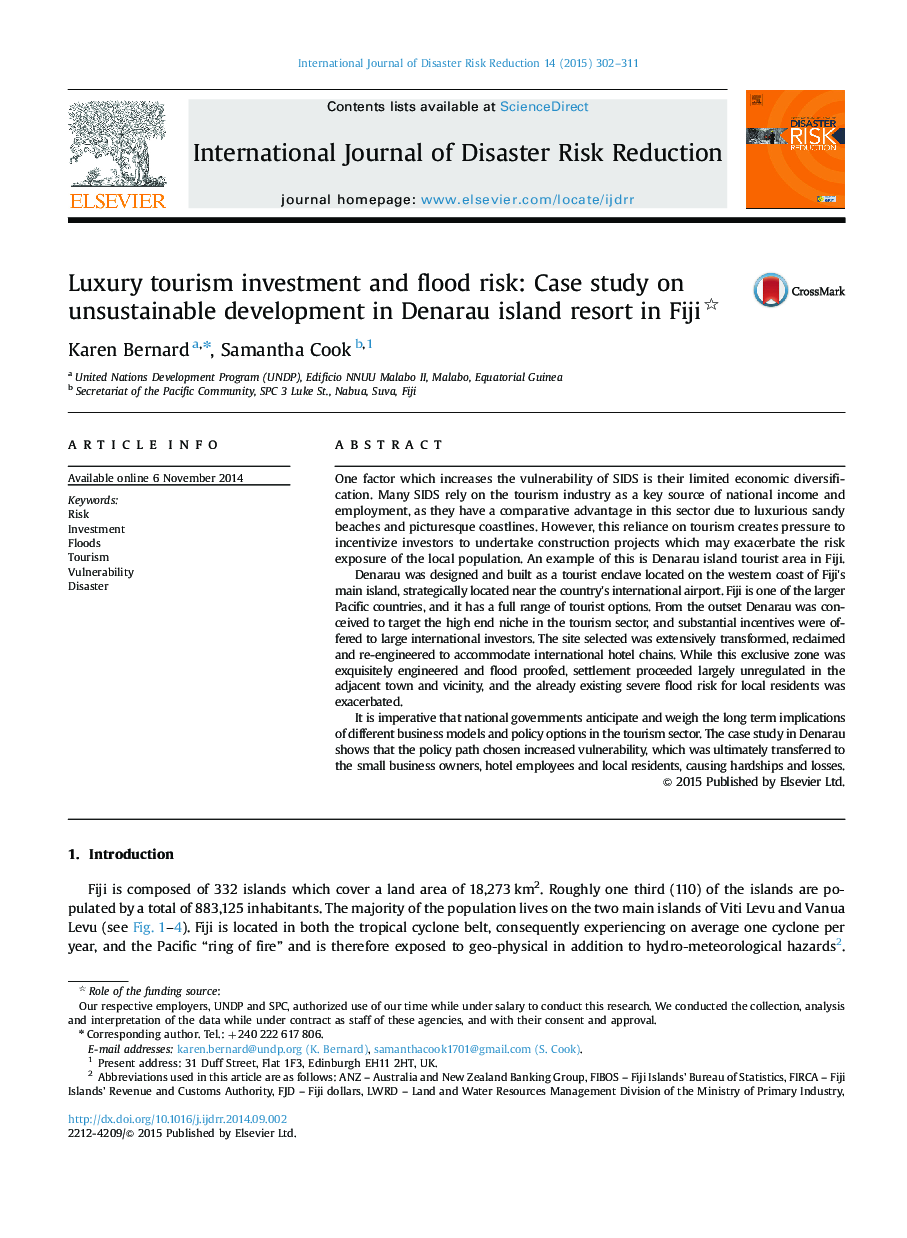| Article ID | Journal | Published Year | Pages | File Type |
|---|---|---|---|---|
| 1055209 | International Journal of Disaster Risk Reduction | 2015 | 10 Pages |
One factor which increases the vulnerability of SIDS is their limited economic diversification. Many SIDS rely on the tourism industry as a key source of national income and employment, as they have a comparative advantage in this sector due to luxurious sandy beaches and picturesque coastlines. However, this reliance on tourism creates pressure to incentivize investors to undertake construction projects which may exacerbate the risk exposure of the local population. An example of this is Denarau island tourist area in Fiji.Denarau was designed and built as a tourist enclave located on the western coast of Fiji's main island, strategically located near the country's international airport. Fiji is one of the larger Pacific countries, and it has a full range of tourist options. From the outset Denarau was conceived to target the high end niche in the tourism sector, and substantial incentives were offered to large international investors. The site selected was extensively transformed, reclaimed and re-engineered to accommodate international hotel chains. While this exclusive zone was exquisitely engineered and flood proofed, settlement proceeded largely unregulated in the adjacent town and vicinity, and the already existing severe flood risk for local residents was exacerbated.It is imperative that national governments anticipate and weigh the long term implications of different business models and policy options in the tourism sector. The case study in Denarau shows that the policy path chosen increased vulnerability, which was ultimately transferred to the small business owners, hotel employees and local residents, causing hardships and losses.
